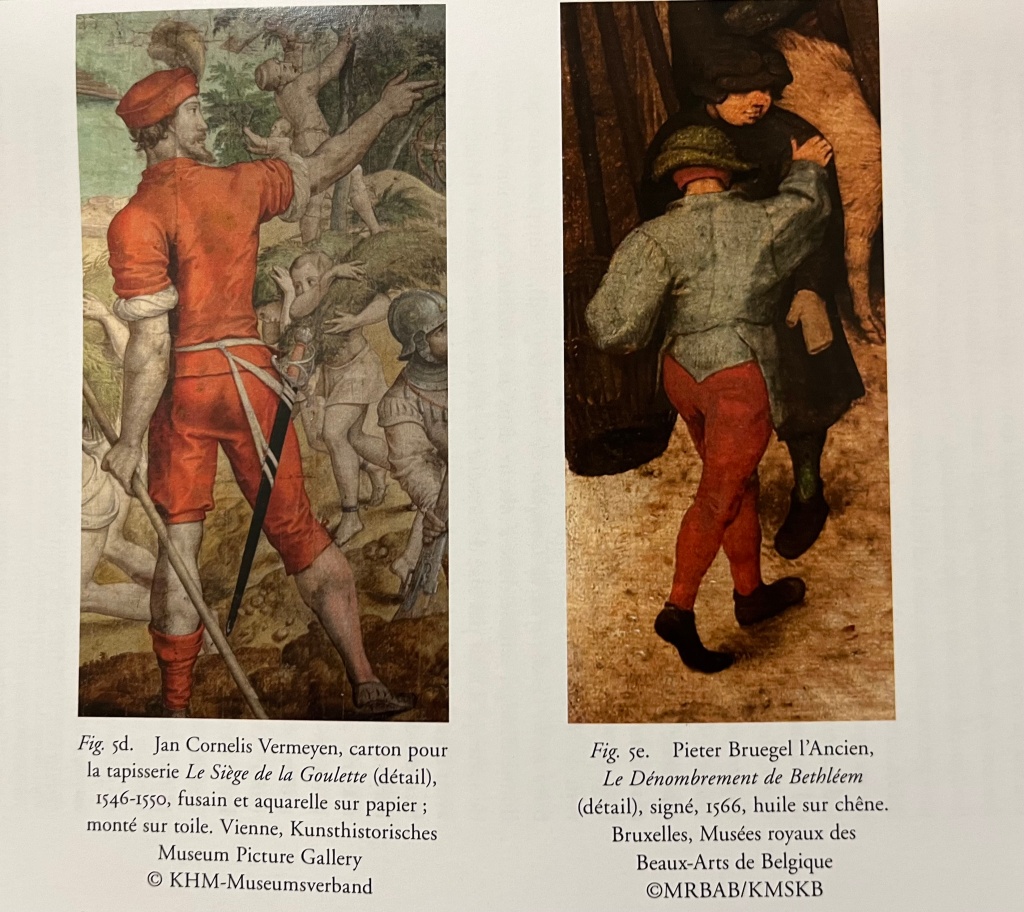BruegelNow
Latest Post
Book Review: Bruegel & l’Italia / Bruegel and Italy: Proceedings of the International Conference Held in the Academica Belgica in Rome, 26-28 September 2019 (Peeters, 2023)

A fascinating new monograph assesses Pieter Bruegel the Elder’s encounter with Italian art and culture. Bruegel, like many Netherlandish artists of his era, traveled to Italy early in his career. His Italy travels are mentioned in most biographies, usually in a cursory fashion. This monograph, comprised of 11 chapters written by leading scholars in the field, takes an in-depth look into this important aspect of Bruegel’s career. It is a compelling addition to Bruegel scholarship, going beyond the superficial recounting of his travels through the region. The monograph is comprised of three sections. Part 1 reviews Italian art in the Low Countries before and during Bruegel’s time. Part II details Bruegel’s journey and his time in Italy. Part III reviews Bruegel’s dialog with Italy in his later life and work.
Bruegel’s trip to Italy has not been closely studied up to this point because no compositions after modern Italian artworks by his hand are known, and the impact of his travels is not immediately evident in his work. The monograph takes issue with this line of thought. The book makes the case that Bruegel didn’t need to travel to Italy to see Italian masters like Raphael and Michelangelo, since prints of these works were already circulating in the Low Countries and were referred by local masters. Instead, many interesting theories of Bruegel’s reasons for travel are put forward. Most interesting is that Bruegel was already employed by print maker Hieronymus Cock and his printing company, Aux Quatre Vents (Sign of the Four Winds), and embarked on the trip in order to make preparatory drawings for engravings which would be executed upon his return to Antwerp. Other authors make the case that Bruegel also undertook the journey to market his talent abroad in preparation for later print sales and painting commissions. Bruegel’s promotion of his work seems to have been particularly effective with the Farnese family, primarily Cardinal Alessandro Farnese and his circle, including his nephew and namesake.
The book makes the case that Bruegel did not go to Italy to simply become familiar with ancient and modern Italian art, but instead to incorporate Italian aspects into his works. The monograph looks to reformulate Bruegel’s relation with the country as a reciprocal exchange, meaning, for example, that Bruegel was influenced by Italian art, and then Bruegel’s drawings and paintings went on to influence later Italian artists. The authors make the case that a profound impact of his time in Italy was manifested in his late panel paintings, with their large figures and energetic movements. Brueghel was likely influenced by the Italian tapestries that he viewed, with their lively, vibrant figures impacting Bruegel’s sequencing of figures in motion. An example of this possible influence is below.

The volume posits that Bruegel not only visited Rome, but he also visited Naples as well as Reggio Calabria. It is thought that he had extensive contact with artists in the region, such as the Croatian miniaturist Giulio Clovio in Lyon, France, when Bruegel was on his way to Italy.
Italy’s influence on Bruegel’s went beyond pictorial composition, and is likely to have continued with the type of material on which he painted. Two of Bruegel’s paintings, Misanthrope (1568) and Parable of the Blind (1568) now in the Capodimonte Museum in Naples, are on glue-tempera canvases, also called Tuchlein. These could have been purposely painted in this format for export to Italy since these paintings could be rolled for long distance transport.
Artistic impact is thought to have occurred with Bruegel’s The Tower of Babel, now in Vienna, where its inspiration could have occurred from Bruegel’s viewing ancient Italian buildings like the Colosseum and allusions to Romanesque architecture. However, Bruegel translates the biblical story into his time, by transporting Babel to an Antwerp-like Netherlandish city of Bruegel’s era.
While I was unable to read the chapters written in Italian, those written in English are of uniformly high quality. The chapter on Bruegel’s Bay of Naples painting, written by Tanja Michalsky, is of interest, since that work has frequently been the subject of authorship debate over the past few decades. The chapter detailing Bruegel’s Seasons paintings by Tine Luk Meganck, posits that the series of paintings was created specifically to hang on the four walls of the villa of Nicholes Jonghelink. This early example of a room installation was done to promote meal-time discussion, since it was installed in the villa’s dining room. Italian villas of the same era had a similar layout and decorations.
The monograph is highly recommended. It provides a deep dive into a previously little-known aspect of Bruegel the Elder’s life and brings forward a wealth of new information that will impact Bruegel scholarship for years to come.